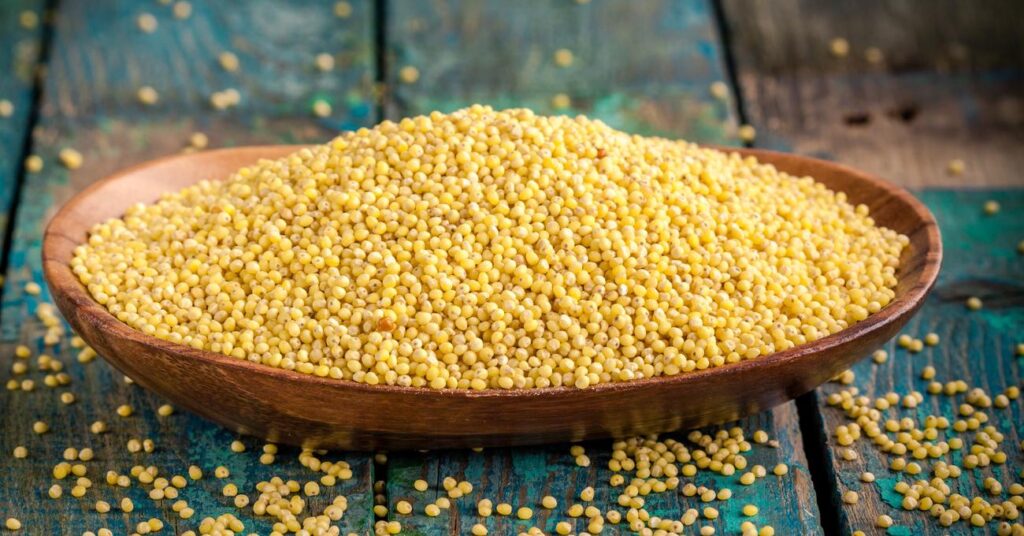Millet is a cherished grain among vegetarians and for all the right reasons. Loaded with fiber, it keeps you feeling full for longer stretches, and its protein content means vegetarians can quickly get their daily protein fix from this wholesome carbohydrate, bypassing animal sources. Plus, did you know reducing meat consumption can naturally help with weight loss?

While in the US, millet is more familiar as birdseed or fodder, this grain has been a fundamental part of diets across Africa and Asia. With a cultivation history that dates back 6,000 years, it’s no newcomer to the world’s plate. Depending on where you go, you might find it served as porridge in Ethiopia, as traditional bread called ‘roti’ in India, or paired with peas and beans in the Caribbean.
Millet’s Health Perks
Firstly, vegetarians, rejoice! Millet is a protein-packed powerhouse. Additionally, it’s a great reservoir of niacin, copper, and manganese. If you’ve been side-stepping wheat due to allergies, millet might just be your new go-to.
Being a whole grain, millet brims with fiber and a range of phytonutrients. Some experts even speculate that the synergy between these phytonutrients and fiber could be the secret behind reduced colon cancer rates. One standout phytonutrient in millet is lignan, which may shield us from hormone-related cancers and cut down heart disease risks.
Besides these, millet is a great way to infuse your diet with magnesium and a special B vitamin – niacin. Magnesium is our artery’s friend, keeping them relaxed and potentially reducing blood pressure. This wonder mineral might also lend a hand to asthma patients and those who grapple with migraine headaches. On the other hand, niacin plays a pivotal role in balancing blood cholesterol.
Choosing, Storing, and Cooking Millet
Embark on your millet journey by picking it up from health food aisles, Asian grocery stores, or gourmet outlets. Recognizable by its dainty, pale-yellow beads, ensure you store it in an airtight container in a cool, dry nook. It’ll stay good for a month, but if you pop it in the freezer, it can last up to a year. Occasionally, you might spot cracked millet labeled as couscous. However, remember, the typical couscous is crafted from semolina.
Whipping up a millet meal? Its neutral flavor makes it adapt effortlessly to any dish. Start with one cup of millet, a splash of vegetable oil, and two cups of boiling water. Let it simmer covered for about 25-30 minutes. Depending on how you cook it – undisturbed or stirred frequently – you’ll either get a fluffy outcome or a creamy one.
Why not kickstart your day with millet as a warm breakfast cereal? Cooking it in apple juice and topping with raisins, brown sugar, or nuts can be a delightful twist. And if you’re in an experimental mood, blend cooked millet with beans or peas to craft vegetarian ‘burgers’. Whether in soups, stews, or standalone, millet is your ticket to a healthy diet filled with fiber and devoid of unnecessary inches on your waist.

